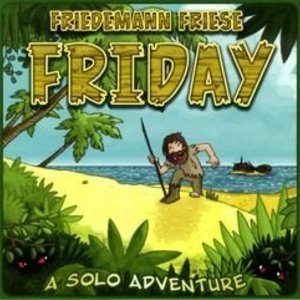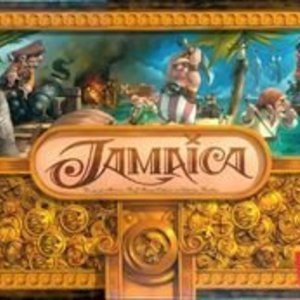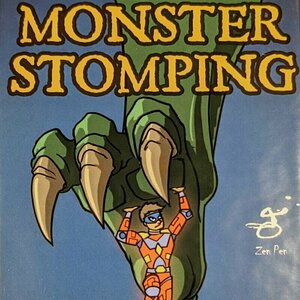Red Otter (340 KP) rated Terraforming Mars: Colonies in Tabletop Games
Jun 5, 2019
This expansion adds a little extra bloat to the game, but it enable interesting options to help improve your engine or get that little extra push. There are some additional floater cards as well to help support the theme from Venus, and some other cards that make for additonal VPs. I do enjoy this expansion, even if it adds an extra bit of time to the game.

Kuan Yin Oracle - Fairchild
Lifestyle and Reference
App
"This deck is sublime! The images are gorgeous. The content is rich with inspiration &...
The Marinated Meeple (1853 KP) rated Jamaica in Tabletop Games
May 7, 2018
For heavier gamers who like complexity, this is way too light. But the art is gorgeous and fun.
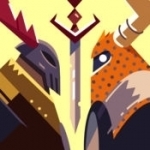
Stormbound
Games
App Watch
Tactical gameplay, card collection, and gorgeous 2D and 3D art combine in Stormbound: Kingdom Wars! ...
games

Textmania - Write On Photos
Photo & Video and Catalogs
App
No more dull pics or texts! Fonto is a great typography app that will turn your photos or pics into...
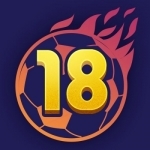
Draft Simulator for FUT 18
Sports and Entertainment
App
Download the best FUT 18 Draft Simulator to enjoy the fun of building drafts with latest FUT 18...
Purple Phoenix Games (2266 KP) rated Monster Stomping: Heroes in Tabletop Games
Dec 15, 2020
Ok, so I don’t have these monsters and superheroes in my area. I wish we did. In any case, Monster Stomping: Heroes is a card game of building heroes to protect your city and also building monsters to attack other cities. The first player to have six City Defense cards in their tableau will win!
DISCLAIMER: We were provided a prototype copy of this game for the purposes of this review. These are preview copy components, and I do not know for sure if the final components will be any different from these shown. Also, it is not my intention to detail every rule in the game, as there are just too many. You are invited to download the rulebook, back the game through the Kickstarter campaign, or through any retailers stocking it after fulfillment. -T
To setup, each player will receive one monster body card, one hero body card, and one city card to be placed in front of them on the table. The remaining setup cards can be placed back in the box. The remaining cards will be shuffled to create the large draw deck. Each player is dealt five cards from this deck to create their hand and the game may now begin!
On a player’s turn they will have a choice of three actions to take: Play, Discard Your Hand, or Attack! When the active player decides to Play they will first draw cards to increase their hand to six cards. Next they may play a card face-up on the table. These cards are Monster Powers, Hero Powers, or City Defense cards. Both Monster and Hero Powers are mix-and-match body parts that add value to the Attack phase. City Defense cards are placed around the city card. Six of these are needed to win. After one of these three card types are played to the table the player may also play a blue-bordered Special Card. The Special Cards could allow players to view the contents of an opponent’s hand, or skip a player’s turn, or even discard a City Defense card.
A player may dislike their hand of cards and wish to Discard Your Hand any number of cards. Once done the player will draw back up to six cards and then discard one to return to the hand limit of five cards.
If the active player is feeling lucky or particularly surly they may Attack! another player’s city. During an Attack! the attacking player and defending player will both roll 1d6. The result of the die roll is then added to any bonuses afforded them from their built Monster (attacker) or Hero (defender). At this time any involved player may play a Combat card from their hand to tip the scales of battle. These will either add or subtract values from the Monster or Hero, or block the Monster altogether, or even switch a player’s Hero and Monster values during the battle. The winning attacker then steals one of the defender’s City Defense cards and places it in their own city. The winning defender will receive the Morale Boost meeple to earn a +1 to their hero the next time they are attacked.
Once the active player has completed their turn play continues to the next player until a sixth City Defense card has been placed. When this happens the next player is allowed one more turn to either earn their sixth City Defense card or thwart the previous player by causing them to lose their sixth card. Play continues in this fashion until one player is the ultimate winner and completely defends their city!
Components. Again, this is a prototype copy of the game and I do not know if these will be updated in any fashion in the final copy. That said, we were provided a box with 2d6, a Morale Boost meeple, and a bunch of cards. The dice are fine and can be switched out with prettier ones if you prefer (I might), and the meeple is an interesting shape and excellent orange color. The cards are matte finished and the art on them is pretty good. The layout of the cards is easy to use. In fact, the layout of the cards (especially the Special and Combat cards) are incredibly reminiscent of the cards in Munchkin.
Actually, the entire time I was playing Monster Stomping: Heroes I could not help but feel like I was playing a better version of Munchkin. It is essentially the same game: the winner has to get to six City Defense cards (10th level in Munchkin), uses cards to debilitate opponents (same in Munchkin), creates better toons in front of themselves (same in Munchkin), and has the additional ability of a helper to aid in battle (same in Munchkin). Let me reiterate that this game is a BETTER version of Munchkin, even though it is extremely similar.
What I really like about this one is the quick play that can be had and the ability to be played by two players. Since I’m comparing it to Munchkin now, a game of Munchkin can easily take a frustrating two or more hours to complete. I say frustrating because all players end up simply ganging up on their opponents at the end just trying to prevent them from winning. While the same is partially true in Monster Stomping, there are only six cards to be collected before becoming the winner and some players may become untouchable at times due to their impressive Monster or Hero-building skills. Another aspect I truly appreciate and enjoy here is that the game can be played with only two players, while Munchkin requires at least three. That may not seem like a huge difference, but if I can play a game at home with my wife without having to add house rules or other ways to doctor up the rules, then I am a much happier man.
I enjoy building the different characters in the game and seeing what kind of abomination I end up with at game’s end. This is much more personal preference for me because building a character in Munchkin is handled much the same way, but differently. For those who have played Munchkin, I am sure you understand.
So all in all, if you are a closet fan of Munchkin and want to protect your gamer cred, you certainly need to check out Monster Stomping: Heroes. It will give you all the good parts of Munchkin but filter out the underwhelming or over-stuffed feelings. It plays quickly, and gives players lots of options to build their characters. The game is easy to teach and learn, and you may even wish to play several games in a row. While I have compared this to Munchkin quite a bit, Monster Stomping: Heroes is its own game and offers several differences to players. If you have been looking for a Munchkin replacement, I may have found it for you. You’re welcome.

